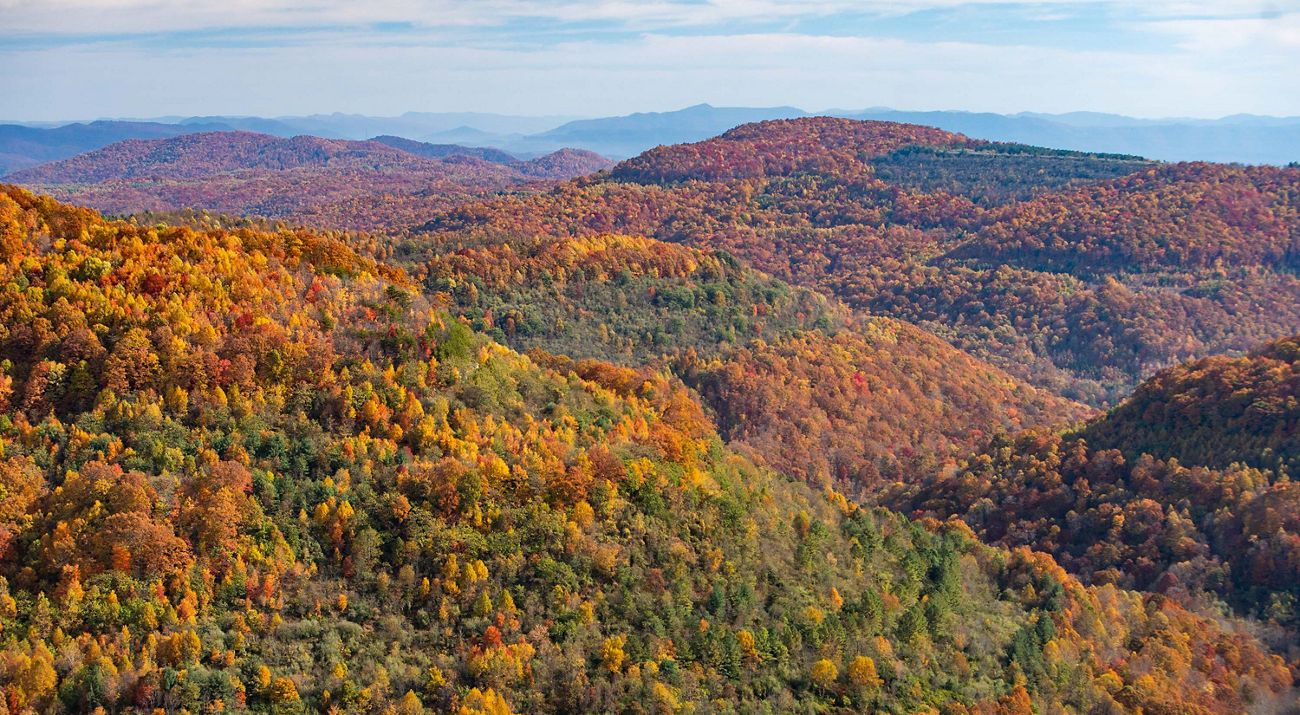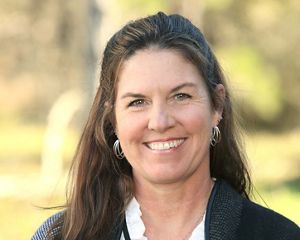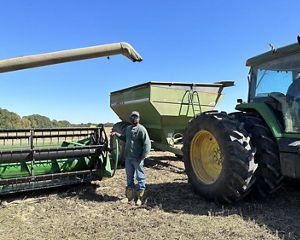Across more than two centuries, the coal mined from the ancient mountains and valleys of Kentucky, Tennessee and Virginia fueled the growth of communities and economies near and far. Apace with that change, greenhouse gases from burning fossil fuels, including coal, have built up in Earth’s atmosphere, contributing to global climate change. Yet all the while, in the space between earth and sky, vast Appalachian hardwood forests have endured— quiet neutralizers removing carbon from the air.
Protected land in this incredibly biodiverse part of North America is critical to climate resilience, offering space for species to move as conditions change. In Kentucky, red and white oak, shagbark hickory and many other tree species make up woodlands where ruffed grouse and cerulean warblers nest in spring and black bears and elk forage under the fiery canopy of fall. The forested countryside is dotted with remnants of once-bustling small towns where miners and their families lived and worked. In recent decades, policies have changed, market forces have shifted, and clean, renewable energy has gained traction. As a result, coal mines have shuttered across the state, leaving many of those isolated communities with little economic opportunity.
“The people who live here are resourceful and proud of where they’re from,” says Chris Garland, who grew up in rural Kentucky and works as The Nature Conservancy’s Central Appalachians project director. “We hunt and fish, forage for medicinal herbs and plants for food, and live life very much outdoors. We have confronted some hard times, but that connection to place is providing a path forward.”


Inspired by the grit and spirit of local communities, TNC devised a novel land protection initiative that is putting 253,000 acres of Appalachian forests to work for the people of Kentucky and their neighbors in Tennessee and Virginia—the Cumberland Forest Project. “TNC isn’t new to buying land,” says Chris, “but this project is different. The properties were purchased with funding from conservation impact investors who will earn a return from the land in various ways, including the sale of carbon credits and sustainably harvested timber.”
According to Chris, one goal is to inspire greater adoption of sustainable forestry practices. In 2022, forestry contributed more than $13 billion to the state’s economy and supported more than 49,000 jobs. The wood harvested from the Cumberland Forest Project tracts meets rigorous Forest Stewardship Council® (FSC®-C008922) sustainability standards, which means it has a higher market value.
The project is also designed to promote outdoor recreation and tourism, and is spurring other forms of economic development, which, in Kentucky, are taking an ironic turn. The subsurface mineral rights to the project’s lands have different owners, meaning that they can extract coal and gas—a somewhat common situation in the state. Those activities generate royalties for the project, which are passed on in their entirety to local initiatives. In Kentucky, the funds are supporting partners working to bring renewable energy to the area. The Mountain Association, a group that aims to help realize a more equitable and resilient economic future for eastern Kentucky, collaborated with TNC and officials in the town of Middlesboro to install rooftop solar on their community center where residents gather for special occasions and to enjoy the city pool.
“Our town is saving thousands a year in energy costs,” says Middlesboro Mayor Boone Bowling. “This is an exciting leap forward because it is bringing new jobs and a new sense of growth, giving people reasons to stay here and define the next era for this beautiful part of the country.”



